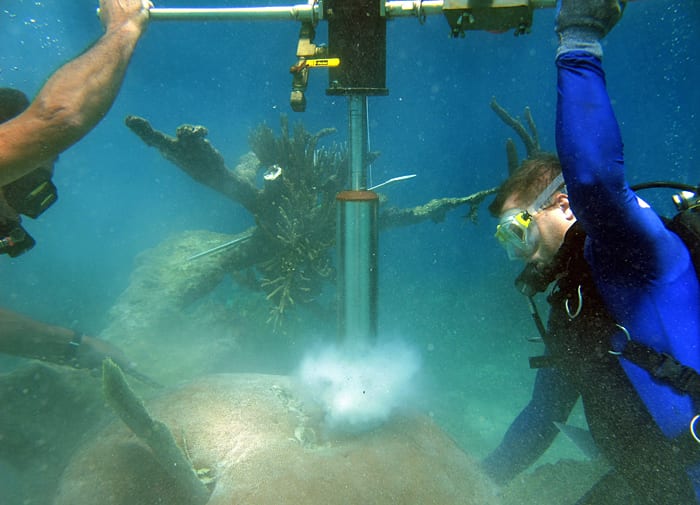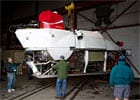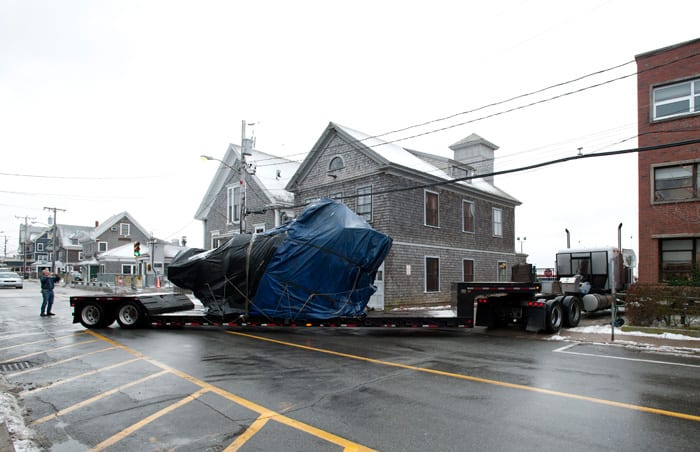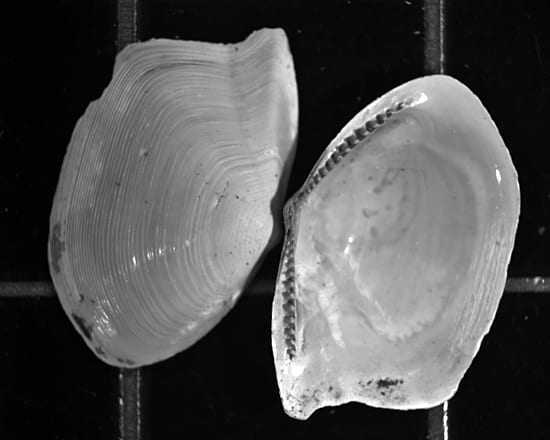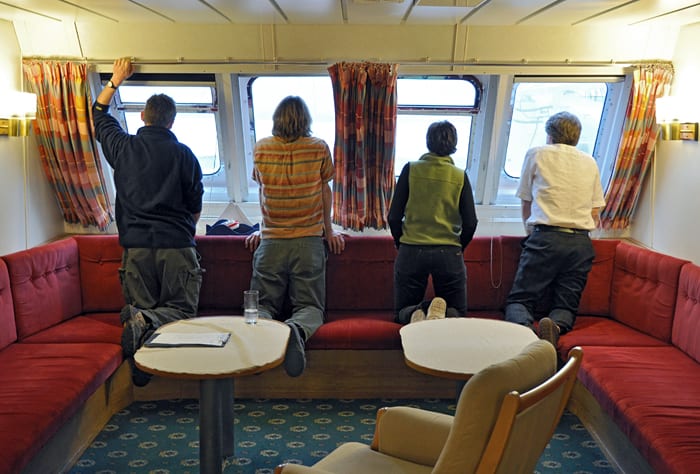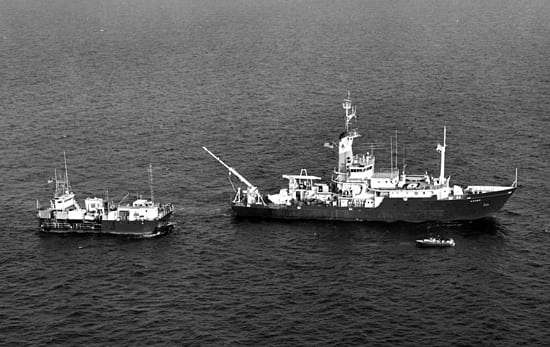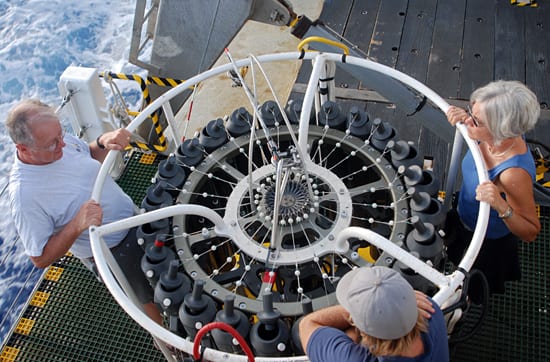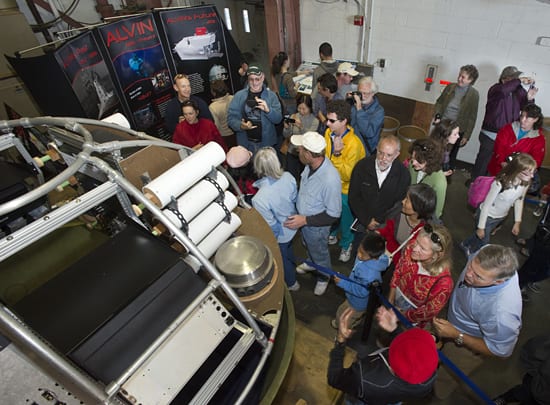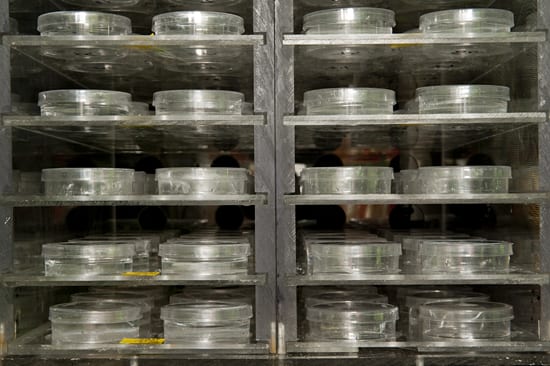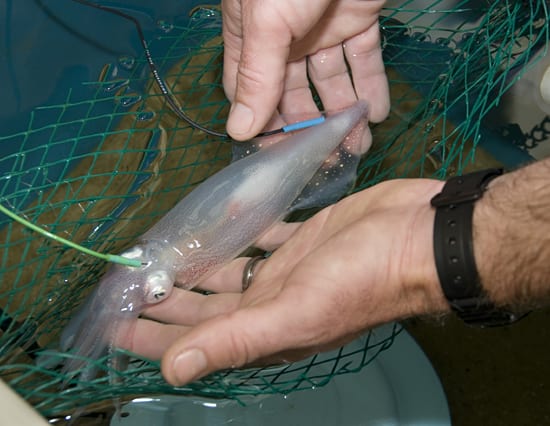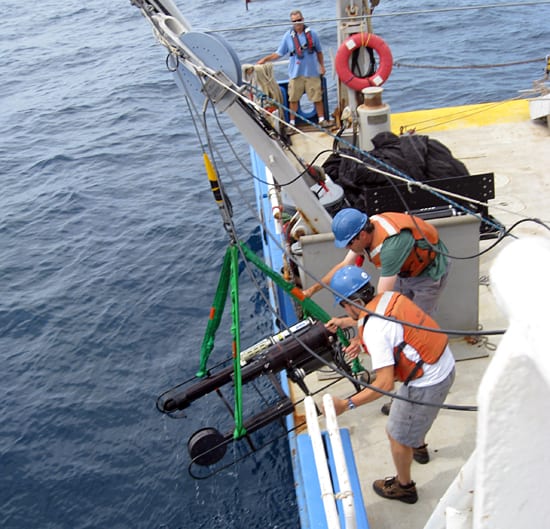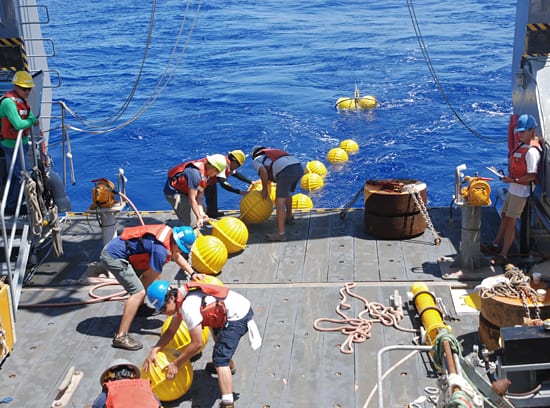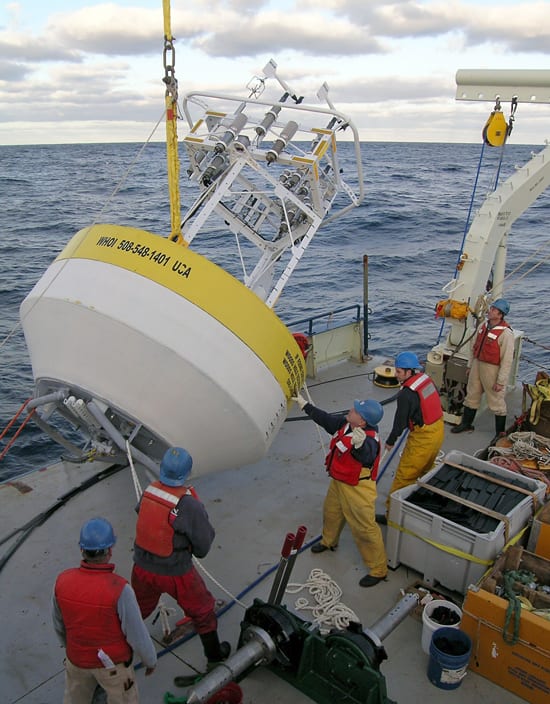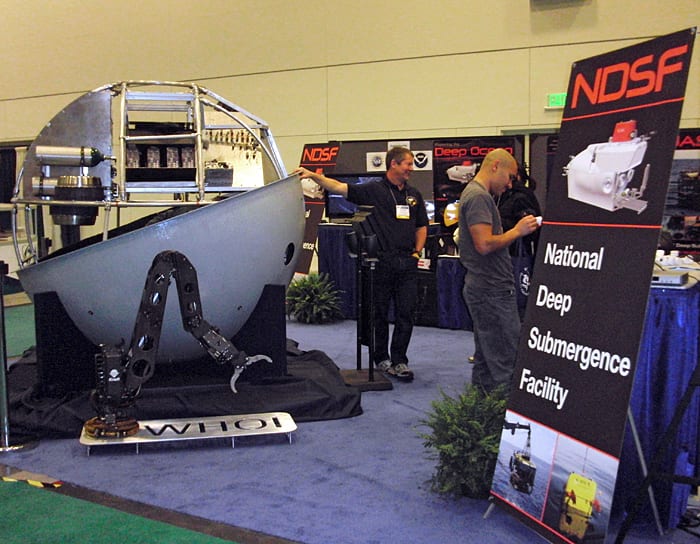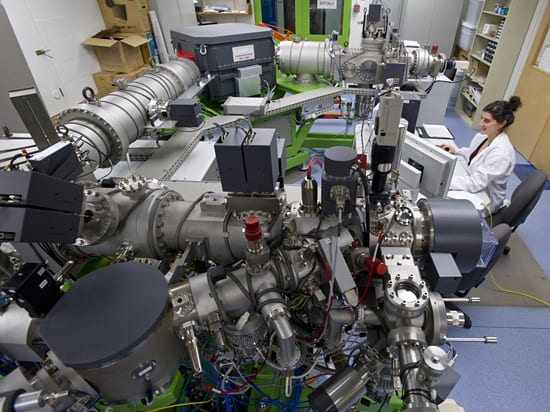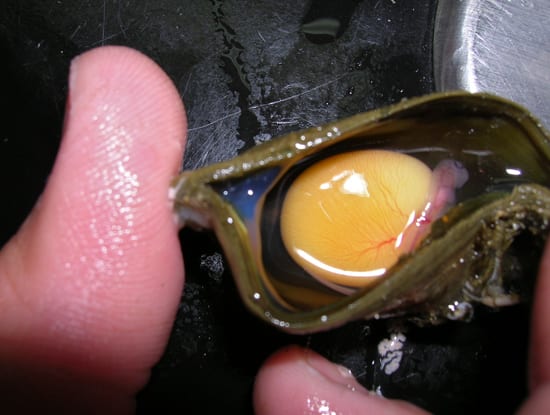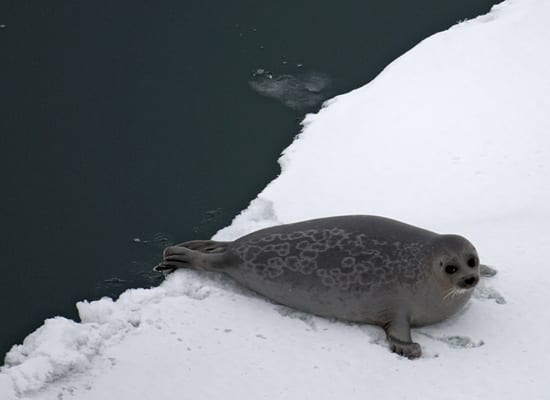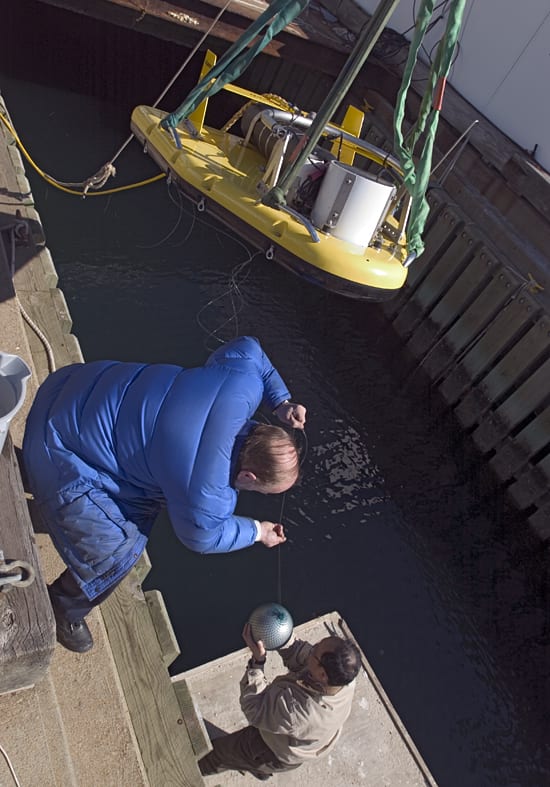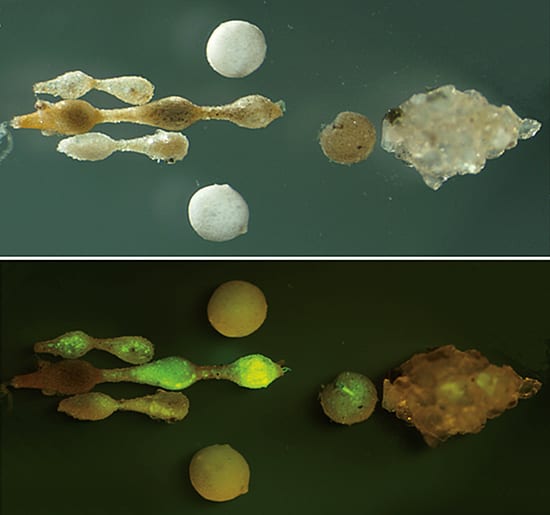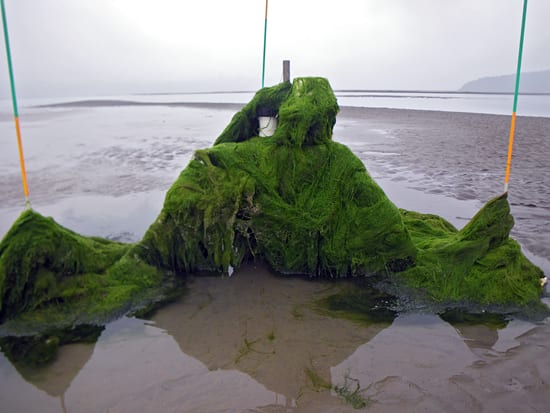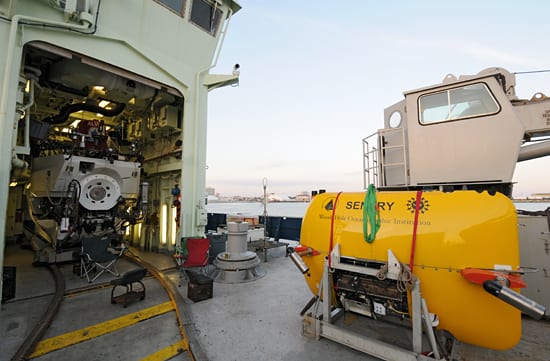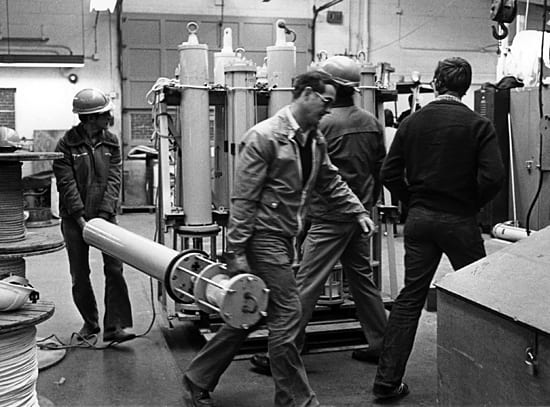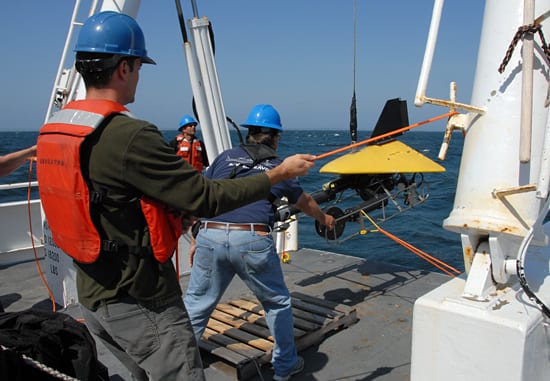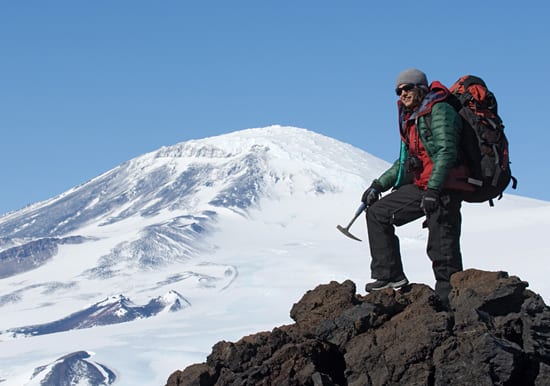Multimedia Items
Drilling for Coral History
WHOI scientists Pat Lohmann (left) and Neal Cantin drill into a massive starlet coral on a reef north of St. Thomas, U.S. Virgin Islands, to remove a core sample. The…
Read MoreAlvin Returns to Woods Hole
Alvin Returns to Woods Hole
1_127357.jpg
Read MoreShells in the Sands of Time
In sediments beneath the Sargasso Sea, WHOI geologist Lloyd Keigwin found a 17,500-year-old clamshell and a mystery: Why was this South Atlantic species living in deep water near Bermuda at…
Read MoreTaking in the Antarctic Sights
When scientists venture into a place as remote and spectacular as the Antarctic, no one is above a little sightseeing. During a recent trip through the Weddell Sea, this group…
Read MoreKnorr and Lulu Head to Sea
A towline connects the crane of the R/V Knorr (right) to Lulu, a 105-foot catamaran that served as the Alvin submersible’s first tender, as the two ships prepared to take…
Read MoreRosettes of the Deep
George Tupper (left) and Terry McKee (right) of WHOI’s Physical Oceanograpthy Department are assisted by Matt Wilkerson of the Bermuda Institute of Ocean Sciences as they prepare a rosette for deployment off…
Read MoreAlvin’s New Quarters
At a public event in Woods Hole in October 2010, visitors get a close look at a mock-up of the new personnel sphere the research submarine Alvin will receive during…
Read MoreTiny Berths for Tiny Shipmates
Rows of petri dishes could mean bacteria being cultured. Instead, these are shipboard accommodations for copepods, little ocean animals related to shrimp but just a fraction of an inch long.…
Read MoreNow Hear This
As part of a research efffort to find out if, and how, squid hear, biologist T. Aran Mooney sets a squid into a tank where its neural reactions will be…
Read MoreKrill Hunters
WHOI biologist Gareth Lawson (green shirt) and summer student fellow Jon Fincke reach to recover the Video Plankton Recorder (VPR), a towed underwater microscope that collects images of plankton. On…
Read MoreBalls on a Wire
Oceanographers learn about the temperature, salinity, and movement of water deep below the surface by setting sophisticated instruments on mooring lines that reach from the seafloor to a buoy at…
Read MoreBuoy Overboard
WHOI mooring technicians and engineers prepare to deploy a surface buoy in the Gulf Stream in November 2005. The buoy was anchored to the seafloor and outfitted with instruments both…
Read MoreAlvin by the Bay
Rick Chandler (left), submersible engineer and operations group administrator, shows a mock-up of the renovated Alvin personnel sphere to a visitor at the National Deep Submergence Facility (NDSF) booth at…
Read MoreThe Tales That Rocks Can Tell
Research associate Kathryn Rose conducts studies using the ion microprobe at WHOI, which measures precisely very small amounts of isotopes in rocks and other samples, revealing hidden clues about how…
Read MoreWhich Came First, the Chicken or the Shark?
Shark egg cases, sometimes called “Mermaids’ purses,” can wash up on beaches, dried and stiff. Researchers found this one at the bottom of the Southern Ocean off Antarctica. In May…
Read MoreA Delicate Balance
Ringed seals, like the one pictured here, are the smallest and most common seals found in the Arctic. Their diets consist mainly of shrimp, krill and other small crustaceans and…
Read MoreGone Fishing
With his colleagues Jim Irish (in blue jacket) and Dezhang Chu (at right), WHOI scientist Tim Stanton adapted a low-frequency commercial sonar system, originally designed to survey seafloor geology, to identify fish…
Read MoreGreen Glow of Life
One suggested way to reduce carbon dioxide emissions is to pump it into the deep ocean, where proponents believe it would remain as a slurry-like hydrate. WHOI geobiologist Joan Bernhard…
Read MoreUnwanted Harvest
Low tide reveals gobs of the alga Ulva hanging from a sampling station on the Skagit tidal flats north of Seattle. In 2009 a team of researchers led by WHOI…
Read MoreThe Dynamic Duo
The manned submersible Alvin (left) made headlines during its recent Dive and Discover mission in the Gulf of Mexico, but the autonomous underwater vehicle Sentry (right) is what had the scientific…
Read MoreReady for a Rest
Jerry Dean (foreground) and colleague carry a Vector Averaging Current Meter that had just been recovered from the Sargasso Sea, where it was attached to a mooring line as part…
Read MoreProfiling Plankton
WHOI biologist Gareth Lawson (foreground) and colleagues from the University of Rhode Island prepare to deploy the Video Plankton Recorder (VPR) during a September 2010 expedition to the Gulf of…
Read MoreGo South, Young Woman
Research at WHOI isn’t focused exclusively on the ocean. In 2007, MIT/WHOI Joint Program student Andrea Burke got the chance to travel to Antarctica. She joined an expedition led by…
Read More
